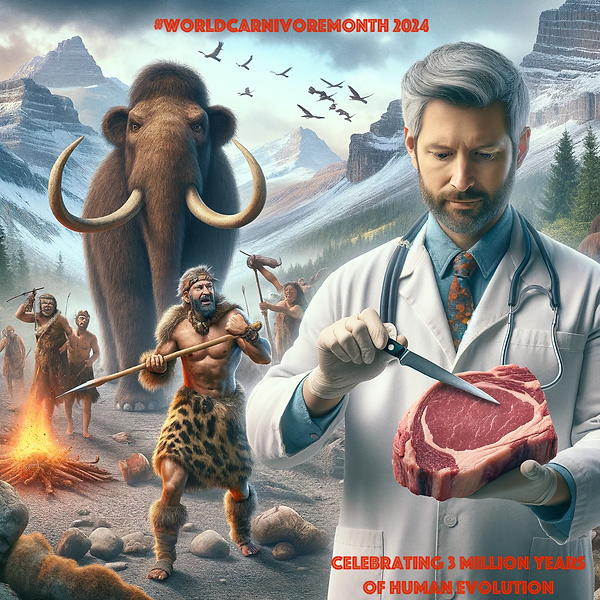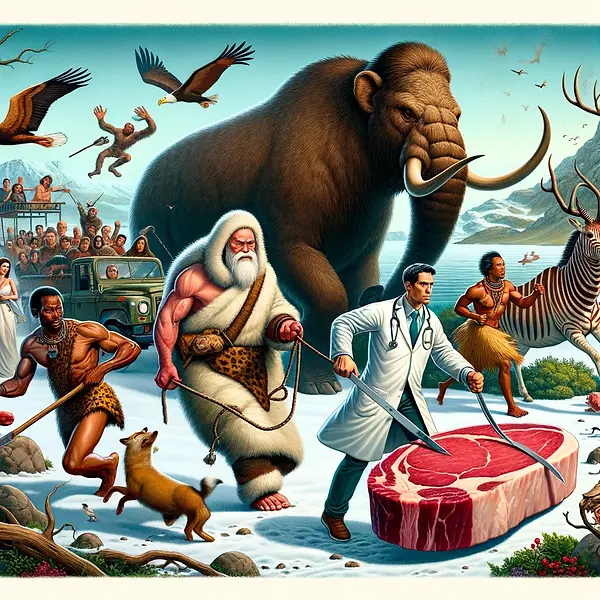


Title:
Rapid changes in the gut microbiome during human evolution
Abstract:
Significance
Human lifestyles profoundly influence the communities of microorganisms that inhabit the body, that is, the microbiome; however, how the microbiomes of humans have diverged from those found within wild-living hominids is not clear. To establish how the gut microbiome has changed since the diversification of human and ape species, we characterized the microbial assemblages residing within hundreds of wild chimpanzees, bonobos, and gorillas. Changes in the composition of the microbiome accrued steadily as African apes diversified, but human microbiomes have diverged at an accelerated pace owing to a dramatic loss of ancestral microbial diversity. These results suggest that the human microbiome has undergone a substantial transformation since the human–chimpanzee split.
Abstract
Humans are ecosystems containing trillions of microorganisms, but the evolutionary history of this microbiome is obscured by a lack of knowledge about microbiomes of African apes. We sequenced the gut communities of hundreds of chimpanzees, bonobos, and gorillas and developed a phylogenetic approach to reconstruct how present-day human microbiomes have diverged from those of ancestral populations. Compositional change in the microbiome was slow and clock-like during African ape diversification, but human microbiomes have deviated from the ancestral state at an accelerated rate. Relative to the microbiomes of wild apes, human microbiomes have lost ancestral microbial diversity while becoming specialized for animal-based diets. Individual wild apes cultivate more phyla, classes, orders, families, genera, and species of bacteria than do individual humans across a range of societies. These results indicate that humanity has experienced a depletion of the gut flora since diverging from Pan.
Details
We identified 35 instances in which the relative abundance of a microbial taxon shifted since the divergences of the extant species of African ape (Fig. 1), 17 of which occurred in humans since the divergence of Homo and Pan. Several of these changes in the composition of the human microbiome have functional implications for host nutrition. The relative abundance of Bacteroides, which has been positively associated with diets rich in animal fat and protein (9), has increased in relative abundance more than fivefold in humans. Conversely, the archaeon Methanobrevibacter, which promotes the degradation of complex plant polysaccharides by using the end products of fermentation for methanogenesis (10), has undergone a more than fivefold reduction within humans. Similarly, the abundance of Fibrobacter, a common plant-fermenting bacterial genus (11) of the microbiomes of wild apes, has been greatly reduced in humans.
Discussion
Comparisons of the gut microbiomes of populations of humans, chimpanzees, bonobos, and gorillas provide insight into the evolution of hominid microbiomes. In particular, we have reconstructed how human microbiomes have changed since humans diverged from Pan by identifying the features of the microbiome shared across human populations to the exclusion of African apes. Our results demonstrate the utility of incorporating information about the phylogenetic relationships among hosts into analyses of their microbiomes.It has been proposed that recent lifestyle changes in humans have depleted the human microbiome of microbial diversity that was present in our wild-living ancestors (4); however, this hypothesis has not been tested through comparisons of humans and closely related host species. A previous survey of two humans and 24 wild apes found that the humans contained lower levels of 99% OTU diversity than the wild apes (8), but the small sample sizes precluded both the statistical evaluation of this trend and the ability to identify bacterial taxa that are consistently not recovered from human hosts. We observed that the mean level of microbial diversity within an individual’s gut microbiome differed substantially among ape species, with the microbiomes of humans being the least diverse. This trend does not appear to be the product of any specific cultural practice and is apparent in humans regardless of whether they resided in cities in the United States, small towns in Malawi, or villages in the Amazonas or Venezuela. This observation confirms the hypothesis that the levels of microbial diversity in the human microbiomes have decreased during human evolution. Of the human populations, humans from cities in the United States harbored the lowest levels of diversity, a trend previously observed by Yatsunenko et al. (5), suggesting that microbial diversity has been reduced even further in this group.An alternative, but less parsimonious, explanation for the differences among the observed levels of diversity within hosts of each species is that Pan and Gorilla have experienced independent increases in the levels of microbial diversity since diverging from humans. Providing an explanation for these independent increases is difficult, however, whereas cultural and ecological differences between humans and wild apes provide clear causes for the reduced microbial diversity along the human lineage. Extending sampling to wild-living populations of more distantly related primate species will provide further evaluation of these the competing hypotheses that explain the current variation in diversity levels across human and wild ape microbiomes.Despite marked differences among the microbiomes of human and African ape species, there exists a set of bacterial taxa shared across host populations, potentially representing the ancestral core of the African ape microbiome. Moreover, co-occurrence patterns among many of these taxa are recapitulated across host species (Fig. S2). This result mirrors previous descriptions of “enterotypes” (14–16) or “community types” (17): bacterial assemblages within the gut microbiomes of humans, chimpanzees, and mice defined by differential representation of Prevotella, Bacteroides, Ruminococcus, and Parabacteroides (14–16). Thus, it is possible that these consistent co-occurrence patterns among bacterial taxa result from ecological relationships that predate the diversification of human and African ape species.Sampling the gut microbiomes of hundreds of individuals from each host species also allows the identification of population-level differences in the mean relative abundances of scores of bacterial taxa. Analyzing these differences in a phylogenetic context provides insight into how the composition of the human gut microbiome has been reshaped since humans diverged from other species. Consistent with the known dietary shifts that occurred during human evolution (18), taxa that have been associated with the digestion of animal foodstuffs (9) have risen in relative abundance in the human gut microbiome, whereas taxa that have been associated with the digestion of plant-based diets (9) have become less prominent.Phylogenetic comparisons of populations of host species can reveal the consistent differences between their microbiomes that arose since the host species diverged; however, the relative roles of genetic divergence and ecological/cultural divergence between host species in generating the differences between their microbiomes remain unclear. The sampling of hosts consuming similar diets in similar environments can reveal the extent to which the contents of microbiomes are attributed to innate differences between the hosts as opposed to differences between the hosts' environments or lifestyles. Some attempts have been made to compare the microbiomes of different host species that co-occur. For example, Ley et al. (19) showed that differences between the gut microbiomes of distantly related mammal taxa were maintained when hosts resided within the same zoo. Similarly, Song et al. (20) found that cohabiting dogs and humans shared more bacterial OTUs compared with hosts from separate households, but the gut microbiomes of dogs remained distinct from those of their cohabiting humans. Likewise, Moeller et al. (21) showed that sympatric chimpanzees and gorillas harbored more similar sets of bacterial species than did the gut microbiomes of allopatric chimpanzees and gorillas, but chimpanzee and gorilla microbiomes can always be differentiated, even when the host species live in sympatry (21). These results suggest that, although shared environments might lead to the exchange of some bacterial taxa, many of the differences among the microbiomes of host species are robust to environmental influences.
Conclusions
We analyzed the microbiomes of hundreds of humans and African apes in a phylogenetic framework to reconstruct how microbiomes have diverged over the course of hominid evolution. This approach, which relies on population-level microbiome data from a clade of host species for which the phylogenetic relationships are known, can be applied to interrogate the evolutionary history of the microbiomes of a diversity of host groups. Relative to the microbiomes of wild apes, human microbiomes have experienced a reduction in ancestral microbial diversity and an increase in the frequency of bacterial taxa associated with animal-based diets. The consequences of this reduction of bacterial diversity in the human gut microbiome remain unexplored; however, low levels of bacterial diversity in the microbiome have been associated with gastrointestinal disorders (22), obesity (23), and autoimmune disease (24). Understanding how recent changes in the gut microbiome have influenced human health can benefit from further study of the ancient relationships between wild apes and their resident microbial communities.
Hypothesis:
Compositional change in the microbiome was slow and clock-like during African ape diversification, but human microbiomes have deviated from the ancestral state at an accelerated rate. Relative to the microbiomes of wild apes, human microbiomes have lost ancestral microbial diversity while becoming specialized for animal-based diets.







